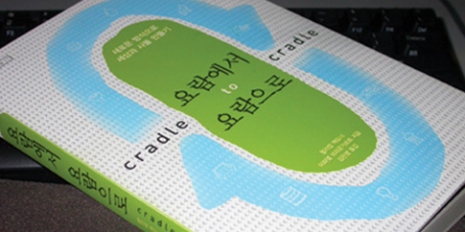
I was lucky enough to be a part of the select audience at Michael Braungart’s extra presentation on Tuesday. Three points have reverberated in my mind since his presentation on Cradle to Cradle design thinking:
I was lucky enough to be a part of the select audience at Michael Braungart’s extra presentation on Tuesday. Three points have reverberated in my mind since his presentation on Cradle to Cradle design thinking:
“A design that is less bad is still bad”
Ouch. It struck me that all of our measuring and comparison to create better eco-efficient products is wasted if we are still producing toxic objects that do not benefit the users or the environment. Michael reinforced his message of a simple ‘yes/no’ decision when it came to designing products and services, he challenged all designers to ask the question – is this product/material/method good or bad?
“Eco-efficiency vs Eco-effectiveness”
Braungart made a good point on the pessimistic outlook we have to designing products today. A lot of what we design is focused on minimising the negative impacts on the environment; reducing energy consumption, decreasing emissions, minimising material use and so on. He stated that efficiency is a negative term that is not beautiful and contrasted this with nature, which is not efficient but effective, and manages to execute this beautifully. Effectiveness puts a positive slant on the way we design; increasing, optimising and supporting the work we do
“Design for the product’s nutrient cycle”
The design process was broken down into two streams: product’s to be consumed are part of what is termed a biological nutrient cycle, and those that provide a service as part of a technical nutrient cycle. Technical nutrients are component parts and materials that are remanufactured and incorporated into a different series of products and services to maximise and enhance their existence. This design for complete replenishment of material/product systems provides new options for the disassembly and reintegration of many materials that we currently consider ‘bad’ and opens up possibilities for new and innovative design.